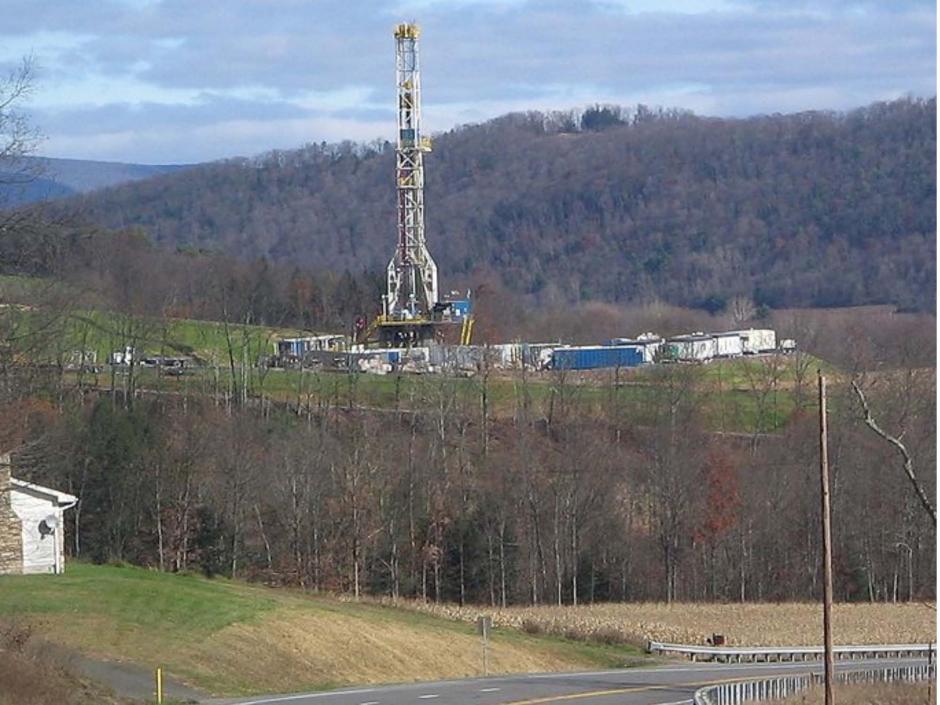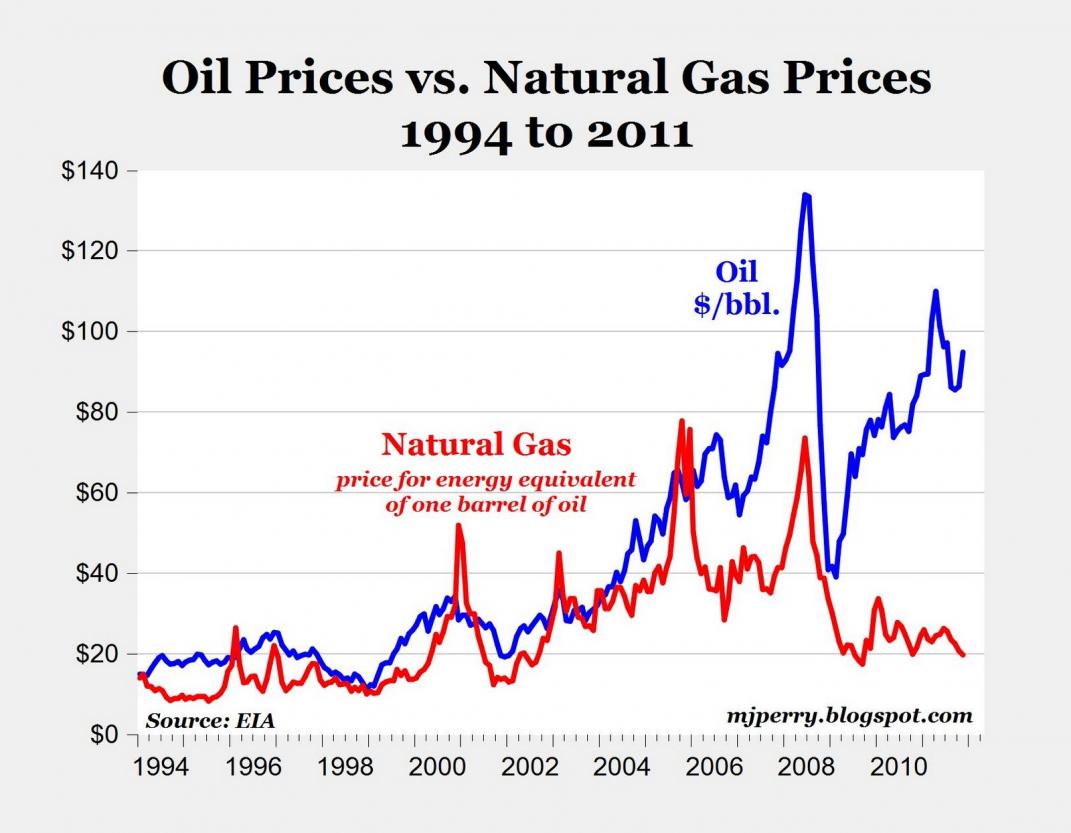 America has received a gift whose consequence and magnitude is just now unfolding before our eyes. Taken to its limits, it may in the course of the next decade finally free us from many of our foreign entanglements while lifting the economic burdens from the working majority that has seen their wages stagnate for the past 40 years. I am writing of course about the natural gas boom that has taken hold across a large part of the country, but more specifically in an area I am most familiar with – northern Pennsylvania. For the first Christmas in several years I have returned to my hometown of Williamsport and discovered a blue-collar turnaround that resembles in some ways the emerging semiconductor industry of the 1970s. It’s a bottoms up led opportunity that is embraced by many and out of the sight of the governing class.
America has received a gift whose consequence and magnitude is just now unfolding before our eyes. Taken to its limits, it may in the course of the next decade finally free us from many of our foreign entanglements while lifting the economic burdens from the working majority that has seen their wages stagnate for the past 40 years. I am writing of course about the natural gas boom that has taken hold across a large part of the country, but more specifically in an area I am most familiar with – northern Pennsylvania. For the first Christmas in several years I have returned to my hometown of Williamsport and discovered a blue-collar turnaround that resembles in some ways the emerging semiconductor industry of the 1970s. It’s a bottoms up led opportunity that is embraced by many and out of the sight of the governing class.
Williamsport proper is a town of 30,000 that sits at the center of the natural gas drilling and is the largest city within Lycoming County, which has a population of only 116,000 even though it is larger than Rhode Island. The city plays host to the Little League World Series every August somehow figuring out how to house the thousands of visitors who make their way – mostly by car from the larger airports that are anywhere from 100 to 200 miles away. Geographically Williamsport is unique in that it is a city that is 200 miles equally distant from New York, Baltimore, Philadelphia, Pittsburgh, Buffalo and Washington DC and thus was attractive as a locale for industry trying to reach markets with large populations.
A generation ago (call it 40 years), the economic decline of middle America, represented by communities in Pennsylvania, Ohio, Michigan, Illinois was set in motion by the forfeiture of energy independence to OPEC. In 1973, oil prices quadrupled. In 1979, there followed a further tripling. The natural inclination of high school graduates like myself was to go off to a different part of the country where opportunities were greater. For me, the logical choice was high tech.
For the past two years I have following the economic revival across the country that is based on the new drilling technique called horizontal fracking that applies to oil fields in North Dakota and gas fields in the Marcellus Formation, which stretches from upper state New York down through Pennsylvania and into Ohio and West Virginia. In a matter of just a handful of years, the estimates of retrievable natural gas have exploded to several hundred years. In addition, the cost to drill has dropped dramatically – at a rate that would look like a Moore’s Law Curve.
 The first order impact of the natural gas drilling is that gas is now 75% cheaper than oil on an equivalent energy basis. The drop in price is so dramatic that many northeasterners who are still heating with oil are shelling out $2,000 to make the conversion of homes to gas from oil and estimating a two-year payback. The second order effect is much more interesting. Story after story abounds of various industries (e.g. chemical and steel) springing back to life because of cheaper natural gas (see story here).
The first order impact of the natural gas drilling is that gas is now 75% cheaper than oil on an equivalent energy basis. The drop in price is so dramatic that many northeasterners who are still heating with oil are shelling out $2,000 to make the conversion of homes to gas from oil and estimating a two-year payback. The second order effect is much more interesting. Story after story abounds of various industries (e.g. chemical and steel) springing back to life because of cheaper natural gas (see story here).
Williamsport has experienced boom times before. In the 1870s and 1880s it was the lumber capital of the world. The rolling hills of the Appalachian Mountains that surround the city provided the lumber that was cut then transported by the Susquehanna River down to the lower cities and eventually to the Chesapeake. At one time the city had more millionaires per population than any in the world (The High School Mascot is named “The Millionaires”). The river, which facilitated the transport of lumber, had a tendency to flood after days of heavy rains. And so in 1889 it came to an end when one such flood wiped out the lumbering infrastructure.
As I drove into town this week, I saw hotel after hotel springing up along the highway that runs along the river (that is now protected by a 36 foot high dike). The hotels are 30-40% occupied by the hundreds out of town workers brought in by Texas oil and gas companies to supplement the local hiring. A Starbucks and Panera Bread Restaurant have moved in. Just beyond the downtown are the many smaller homes built in the early 1900s to 1930s. Some are in need of repair and serve as reminders of what high energy prices during the past 40 years can do to a family budget All in all though the resurgence is noticeable and in 2010 Williamsport was ranked as the 7[SUP]th[/SUP] fastest growing city in the US.
If one were to compare it to the semiconductor industry, my guess is that the fracking technology is at the place semiconductors were in the early 1970s. The technology has been in development for many years but just became economical in the last 3-4. The widespread use of it and the focus in remote areas such as the mountains and small towns that surround Williamsport mean that it will be hard to stop as the vested interests outweigh environment roadblocks.
In the early 1970s, the semiconductor industry was just starting to blossom. In quick succession, the DRAM, EPROM and Microprocessor were born. ASICs, PLDs, FPGAs and Flash followed in the 1980s and 1990s. Robert Noyce and Gordon Moore could hardly have imagined in the early 1970s that semiconductors would be a $300B business today.
The message that I take away from my experience in the semiconductor industry and the hometown revival of Williamsport is that great industries are a bottoms up activity that are little noticed until they become significant. During these past four years a top down mandate to develop solar and wind power has failed to make more than a minor dent and then only with great subsidies and political intervention. In this same time period, gas has had a greater drop in price and is now even more economical that coal for generating electricity.
I will make an out of the box prediction that I have been thinking about for some time. The 2012 presidential election will be decided in Pennsylvania. In 2000 it was Florida and in 2004 it was Ohio. This election will come down to the one state that has the electoral heft to swing the election and also has The Major Theme to be debated over by a great majority of the people of this country. Are we to base our future on solar and wind that are proving to be uneconomical for at least another 10 years or do we remove the roadblocks to natural gas development that leads to significant job growth and energy independence. The significance of this theme is that I believe it will lead to a reshaping of the American Economy and the Political make up that is to follow. Just as the South turned Red with Reagan in 1980 and both coasts turned blue with Clinton in 1992, now what has derisively been labeled the Rust Belt for 40 years may turn Red with America’s Generational Turn.






Musk’s new job as Samsung Fab Manager – Can he disrupt chip making? Intel outside